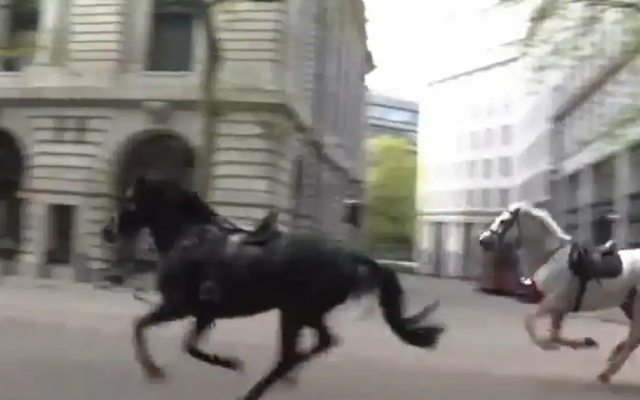The Cheetah is the world’s fastest land animal and Africa’s most endangered big cat. Uniquely adapted for speed, the Cheetah is capable of reaching speeds greater than 110 Km/h in just few seconds. With its long legs and very slender body, the Cheetah is quite different from all other cats and is the only member of its genus, Acinonyx. The Cheetah’s unique physiology allows it to attain the extreme speeds for which it’s famous. Four sub species of Cheetahs have been recognised.
Cheetahs are covered almost entirely with small black spots on a background of pale yellow and have a white underbelly. Their faces are distinguished by prominent black lines that curve from the inner corner of each eye to the outer corners of the mouth.
It typically reaches 67 to 94cm at the shoulder and the head and body length is between 1.1 and 1.5 m (3-4 feet). Adults weigh between 21 and 72 kgs. They have unretractable claws, special paw pads for extra traction and a long tail for balance. The Cheetahs has a total of 30 teeth. The sharp, narrow carnassial are larger than those of leopards and lions, suggesting the Cheetah can consume larger amount of food in a given time period. The small, flat canines are used to bite the throat and suffocate the prey. During a chase, Cheetahs take about 31/2 strides per second and 60 to 150 breaths per minute.
The Cheetah occurs in a variety of habitats such as savannahs in the Serengeti, arid mountain ranges in the Sahara and hilly desert terrain in Iran. The Cheetah is threatened by several factors such as habitat loss, conflict with humans, poaching and high susceptibility to diseases.
Historically ranging throughout most of Sub-Saharan Africa and extending Eastward into the Middle East and to Central India, the Cheetah is now distributed mainly in small, fragmented populations in Central Iran and Southern, Eastern and North Western Africa. Unlike most carnivores, Cheetahs are active mainly during the day, hunting in the early morning and late afternoon.
The Cheetah lives in three main social groups: females and their cubes, male coalitions and solitary males.
Adult males and females rarely meet except to mate. Males in a coalition are affectionate towards each other, grooming mutually and calling out if any member is lost. The Cheetah is a carnivore that hunts small to medium-sized prey. Generally, only groups of Cheetahs will try to kill larger prey.
The gestation period is three months. The female gives birth to two to eight cubs, usually in an isolated spot hidden in the cover of tall grass or thicker vegetation. At birth, cubs weigh about 250 to 300 grams. Their fur is dark and includes a thick yellowish grey mane along the back, a trait that presumably offers better camouflage and increased protection from high temperatures during the day and low temperatures at night during the first few months of life. Mortality among young cubs can be as high as 90 per cent in the wild, often because of other predators. The mother leaves her offspring when they are 16 to 24 months old. Young males are chased away by the resident male coalition, travelling several hundred kilometres before establishing residence and becoming sexually active at 2 to 3 years of age. Female offspring will generally inhabit the same vicinity as their mother. Life expectancy of Cheetahs is about 7 years in the wild and generally from 8 to 12 years in captivity.
Cheetahs appear to be less selective in habitat choice than other felids and inhabit in a variety of ecosystems. Areas with greater availability of prey, good visibility and minimal chances of encountering larger predators are preferred.
Cheetahs in Eastern and Southern Africa occur mostly in savannahs like the Kalahari and Serengeti. In Central, Northern and Western Africa Cheetahs inhabit arid mountain ranges and valleys. In the harsh climate of the Sahara, Cheetahs prefer high mountains.
In prehistoric times, the Cheetah was distributed throughout Africa, Asia and Europe, but gradually fell to extinction in Europe, possibly because of competition with lion.
However, the Cheetah has been classified as Vulnerable by the IUCN.
The Cheetah has been widely portrayed in a variety of artistic works.
• In Egypt, the Cheetah was revered as a symbol of royalty in the form of the cat Goddess Mafdet.
• An oil painting by the 16th century Italian painter Titan, the chariot of the Greek God Dionysus is depicted as being drawn by two Cheetahs.
• The painting by 19th century Belgian symbolist painter Fernand is a representation of the myth of Oedipus and the Sphinx and portrays a creature with woman’s head and a Cheetah’s body.
• Two Cheetahs are depicted standing upright and supporting a crown in the coat of arms of the South Africa.
• The book “How It Was with Dooms” tells the true story of family raising an orphaned Cheetah cub named Dooms in Kenya. The 2005 film Duma was based loosely on this book.
• The Mac OS X 10.0 was code- named “Cheetah”.

















